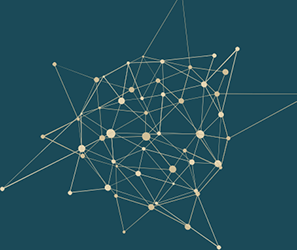Speaker
Description
Local exact solutions for the scalar field theory, both for the classical and the quantum case have been recently obtained [1{3] by a technique devised by Bender, Savage and Milton [4]. This permits to derive the set of Dyson-Schwinger equations in a fully differential form. These methods can be applied also to the exact solution of the Yang-Mills theory [5] and corresponding confinement studies [6]. It is also possible to get a significant agreement for the spectrum of the theory [7] and to prove confinement in 2+1 dimensions [8].
Non-local quantum field theories have been studied recently as a promising approach to go beyond the Standard Model (e.g. see [9-11]). This approach is motivated by p-adic string field theory [12-14]. These theories have the properties of UV-completeness and have been proposed as a direction of UV-completion the non-local inifinte-derivative theories, and are ghost-free, re-normalizable and predicts conformal invariance at the quantum level [10, 15]. They are able to rescue dark matter models [11], move trans-planckian processes to sub-planckian [16] and improve inflationary behaviour of the Higgs field [17]. Along these same research avenues, we consider an infinite derivative non-local Yang-Mills theory and we show and we derive the set of Dyson-Schwinger equations in differential form till the 2P-correlation functions. Then, we provide a method to solve them, assuming that non-local effects are small at low-energies and taking into account only the leading order solutions [19] as we already show for the scalar field case [18]. The argument about confinement, put forward in [6], is then extended to this non local case [20]. It is seen that UV-limit is never reached in this case and the theory confines in the IR, the coupling running to infinity, without the appearance of a Landau pole. In these studies, we just assume that one has a proper local solutions to start from to get the corrections due to the non-locality. An immediate consequence of this approach is that the a mass gap is obtained and the spectrum of the theory becomes accessible analytically. In any case, the mass gap is diluted in the UV.
References
[1] M. Frasca, J. Nonlin. Math. Phys. 18, no.2, 291-297 (2011) [arXiv:0907.4053 [math-ph]].
[2] M. Frasca, Eur. Phys. J. C 74, 2929 (2014) [arXiv:1306.6530 [hep-ph]].
[3] M. Frasca, Eur. Phys. J. Plus 131, no.6, 199 (2016) [arXiv:1504.02299 [hep-ph]].
[4] C. M. Bender, K. A. Milton and V. M. Savage, Phys. Rev. D 62, 085001 (2000) [hep-th/9907045].
[5] M. Frasca, Eur. Phys. J. Plus 132, no.1, 38 (2017) [erratum: Eur. Phys. J. Plus 132, no.5, 242 (2017)] [arXiv:1509.05292
[math-ph]].
[6] M. Chaichian and M. Frasca, Phys. Lett. B 781, 33-39 (2018) doi:10.1016/j.physletb.2018.03.067 [arXiv:1801.09873 [hep-
th]].
[7] M. Frasca, Nucl. Part. Phys. Proc. 294-296, 124-128 (2018) doi:10.1016/j.nuclphysbps.2018.02.005 [arXiv:1708.06184
[hep-ph]].
[8] M. Frasca, Eur. Phys. J. C 77, no.4, 255 (2017) doi:10.1140/epjc/s10052-017-4824-7 [arXiv:1611.08182 [hep-th]].
[9] T. Biswas and N. Okada, Nucl. Phys. B 898, 113-131 (2015) [arXiv:1407.3331 [hep-ph]].
[10] A. Ghoshal, A. Mazumdar, N. Okada and D. Villalba, Phys. Rev. D 97, no.7, 076011 (2018) [arXiv:1709.09222 [hep-th]].
[11] A. Ghoshal, Int. J. Mod. Phys. A 34, no.24, 1950130 (2019) [arXiv:1812.02314 [hep-ph]].
[12] E. Witten, Nucl.Phys. B268, p. 253, (1986).
[13] V. A. Kostelecky and S. Samuel, Nucl.Phys. B336, p. 263, (1990).
[14] V. A. Kostelecky and S. Samuel, Phys.Lett. B207, p. 169, (1988).
[15] L. Buoninfante, G. Lambiase and A. Mazumdar, Nucl. Phys. B 944, 114646 (2019) [arXiv:1805.03559 [hep-th]].
[16] L. Buoninfante, A. Ghoshal, G. Lambiase and A. Mazumdar, Phys. Rev. D 99, no.4, 044032 (2019) [arXiv:1812.01441
[hep-th]].
[17] A. S. Koshelev and A. Tokareva, [arXiv:2006.06641 [hep-th]].
[18] M. Frasca and A. Ghoshal, [arXiv:2011.10586 [hep-th]], to appear in Classical and Quantum Gravity.
[19] M. Frasca and A. Ghoshal, [arXiv:2102.10665 [hep-th]], to appear in Journal of High-Energy Physics.
[20] M. Frasca, A. Ghoshal and N. Okada, [arXiv:2106.07629 [hep-th]].
